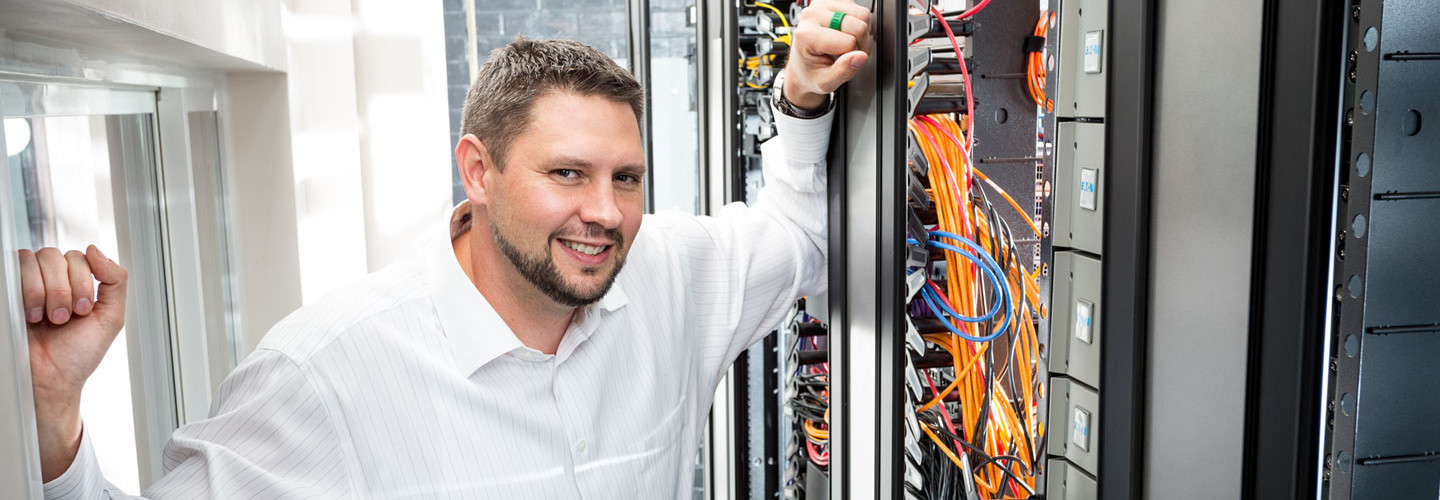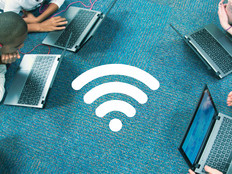Major Infrastructure Upgrade? 3 Districts Show How It’s Done
One school district wanted to deploy hundreds of notebook computers to allow students to take standardized tests online. Another spent millions of dollars to build a bring-your-own-device program for more than 100,000 students. And a third district wanted to increase the speed and reliability of its network to support classroom learning.
What do these three districts have in common? They all began their tech deployments with end goals in mind.
“You don’t start with devices and money,” says Marie Bjerede, principal consultant with the Consortium for School Networking’s Leadership for Mobile Learning initiative. “You start with ‘why.’ ”
The percentage of K-12 school districts that have fully implemented BYOD programs; another 28 percent are working on either large-scale implementations or pilot projects.
SOURCE: CoSN, “2015 K-12 IT Leadership Survey Report,” March 2015
When school districts fail to think strategically, Bjerede says, they make mistakes: They don’t account for future growth, they miss out on cost-saving opportunities, and — frustratingly — they make expensive upgrades that prove ineffective.
To avoid such errors, follow the lead of these three school districts.
Building a Strong IT Foundation
When Joshua Jerome, technology director for Carbon County School District One in Wyoming, arrived at the district two years ago, servers were lying on the floor. Cables weren’t being managed, and obsolete equipment from the 1980s and 1990s sat unused.
Fortunately, Jerome arrived at the same time as a supportive new superintendent, who gave him use of an old gym. He centralized IT operations there, building a data center on the gym stage.
“I’ve had to do a lot of what I call ‘will engineering’ — taking what you have and making it work,” Jerome says. “We did all the physical labor, all the physical implementations.”
Before that, each district school had only a T1 connection, with speeds of 10 megabits per second or slower. Jerome’s immediate goals were to increase connection speeds and to improve network security and stability.
In one of his first acts as technology director, Jerome spent $60,000 to place battery backup on networking equipment, ensuring continuity in the case of an outage. He reduced the number of servers through virtualization, and he created a hub-and-spoke architecture to allocate the new 400-megabit connectivity across half a dozen school buildings. He also upgraded switches and installed new wireless access points.
Previously, teachers simply weren’t able to deliver digital instruction — even though one school had a one-to-one tablet deployment when Jerome arrived. “Teachers would give up,” Jerome says. “They’d say, ‘I can’t even use the technology, because it’s taking 30 to 40 minutes to connect.’ ”
That image — devices going unused because old switches and connections won’t support them — is perhaps the perfect illustration of why an IT infrastructure strategy is so important.
“You have to create stability so you can build upon it,” Jerome says. “It’s no different from building a house. You can make it beautiful, but if you don’t have a strong foundation, it’s going to fall down in five years.”
Revving Up for the Test
Brian Richards, manager of network and information systems at Medina Central School District in Western New York, had a very clear mandate when he arrived in the district four years ago: Get the technology in place for students to take the PARCC assessment.
“I said, ‘We need one computer per kid for these exams, and we don’t have that,’ ” Richards recalls. “And we needed a whole lot of wiring, as well as better wireless infrastructure.”
With a mix of state aid, leftover building funds and federal E-Rate funding, Richards built out the infrastructure, increasing the number of wireless APs, replacing old switches, repairing and replacing wiring and boosting the number of notebooks in the district from only a few to about 400.
In the first year of the multiyear rollout, the team replaced older switches with new Cisco 4500 series chassis and about 50 Cisco 3600 series APs. Older PCs were replaced with Lenovo M77 desktops. Year two saw about 20 more Cisco 3600 APs deployed, as well as 36 Steelcase/Polyvision Eno interactive whiteboards. Two new SANs and a new VMware host server, new backup equipment and software were also added, and the team completed the migration to Active Directory. By the third year, all computers, monitors and printers in the elementary school were replaced by new HP computers, including 200 HP 3125 notebooks. Another 30 APs were deployed and 35 more Eno boards and Epson projectors.
To ensure sustainability, the district has added technicians to support the devices purchased and adopted a four-year funding cycle to refresh technology on an ongoing basis. Debate over standardized testing has put the PARCC assessment on hold for Medina students, but the tech upgrades certainly aren’t going to waste.
“I thought the teachers might not use all of these devices,” Richards says, “but they were fighting over them. Adding more devices and getting a more mature, stable and secure network was exactly what they were looking for.” BYOD Breakthrough
Two years ago, students in Houston’s Cypress-Fairbanks Independent School District began jumping on the school’s network using passwords borrowed from teachers. But to fully support a bring-your-own-device program, district officials knew, they would need to ensure reliability and eliminate chokepoints.
“It was older switches, lack of bandwidth, content filtering,” says Frankie Jackson, the district’s chief technology officer. These were the factors that stood in the way of a successful BYOD program. “We spent all year upgrading and refreshing our network.”
The work was made possible by a bond package that included $90 million for immediate infrastructure improvements. The district used the money to rebuild the primary data center, replacing every core switch. It also installed thousands of Aruba wireless access points, added firewalls and brought in a 7,000-pound generator.
With an eye to redundancy, the district also broke up its network into six separate hubs, then connected each hub to both of its data centers and to two separate Internet service providers.
As part of the rollout, the district is also adding devices for students to use during the day, in case they don’t have their own device to bring with them. The BYOD initiative is being introduced this school year, but the network upgrades are already paying off.
“Three times this summer, one of our ISPs went down,” Jackson says. “Our traffic automatically rerouted to the other ISP. Our users never even noticed.”








